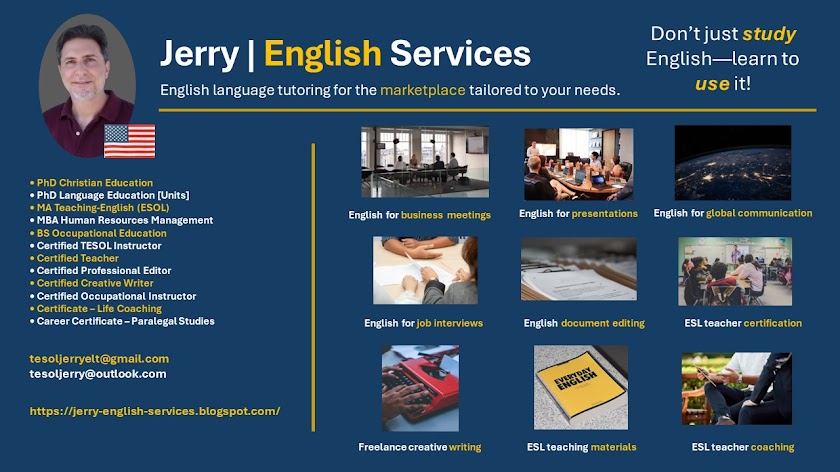Regardless of the acronym we use to describe the field we work in (TESOL, TEFL, TESL, …), it is, in essence, helping people achieve their English language goals—whatever form that may take.
For some people we meet, it is to do well on an English proficiency test, so that they may study or work abroad. For others, it is to be able to do their jobs more efficiently. And still, for others, it is to simply be able to participate in the world of English language in the form of Hollywood movies, chatting with other English speakers, or simply as a way of learning about different cultures. Whatever the case, people come to us for help with their language goals, and pay for that help.
In that respect, they are more than students—they are our customers. As customers, do they encounter a teacher who views her role as being the authority in class; a teacher who feels it is the ultimate goal of each class to finish the lesson; to focus on the procedural aspects of getting through the lesson, instead of the learner’s needs? A teacher who simply tells the learner what is right and wrong, black and white? Or, do our customers encounter a teacher who sees themselves as someone helping another achieve their English language goals?
We can view English language teaching from the three perspectives discussed below.
Teacher Over Student
Figure 1 represents three perspectives on teaching. The first perspective views class members as simply students under my authority; students should listen to me and follow the lesson that I have been given to present. This teacher teaches the lesson as it is presented without deviation.
Teacher to Learners
The second perspective views class members as learners who should learn English a certain way—the way I think they need to. And why not—I have studied and learned teaching methods, and the learner should follow my lead as I know what is best.
Facilitator and People
The third perspective views class members as people … people with human goals who are seeking the help of a professional to help achieve those goals. As such, this teacher collaborates and works with a customer, and adjusts the lesson to fit their needs. This teacher uses lessons as opportunities to assist people in meeting their goals.
That being the case, we ought to exercise courtesy. Instead of teachers saying, tell me..., listen to..., look here..., say it like this..., you must..., and the like, we could say, can you tell me..., let’s listen to..., let’s look here..., you could also say it like this..., you may want to..., and the like. But that's another article.
Think About It
A change in perspectives works for all of us. Rather than view class members as students only (which tends to have stereotypical connotations), we can view them as people with needs, as customers we serve, as fellow humans with personal goals.
Remember, to facilitate rather than dominate, we want to establish a connection before expecting perfection from our students in a business environment.
_______________
Author: Jerry S.
Author bio: Jerry is a marketplace English language trainer of 21 years and Senior TESOL Certificate Instructor affiliated with Midwest Education Group, with a wide range of experience and education ranging from bachelor to doctorate degrees in various fields, who writes articles, blogs, ESL e-learning materials, academic papers, and more.
Image created by author


No comments:
Post a Comment